Relationship building is the foundation of successful blogger outreach. If PR isn’t your forte, there are few other methods you can use to open the door.
The psychology behind marketing can be a very powerful tool. From neuromarketing to consumer behavior, there is a science behind relationship building that blogger outreach can learn from.
This year at PubCon, I grabbed a front row seat for Robert Cialdini’s keynote speech on “The Psychology of Influence.”
Cialdini’s speech focused on the six universal principles of influence, which he considers the groundwork for relationship building. Let’s see how your blogger outreach team can apply these six principles to build lasting relationships with publishers.
1. Principle of reciprocation
“Reciprocation is based off of a human principle obligates me to give back to you the form of behavior that you’ve first given to me.” – Robert Cialdini
In essence, if you do me a favor, I owe you a favor. What’s important to note is that reciprocity is built off of a practice of exchanging for mutual benefit. With outreach, you need to provide a favor to publishers that is equal to if not larger than the mutual benefit they are providing you.
What you give first should be unexpected. For starters, you can give publishers:
- An engaging comment on an article they wrote (like above)
- A tip on a broken link in an article they previously wrote, using http://validator.w3.org/checklink
- A retweet of that story with your intelligent input appended
- Helpful advice the author seeks, completely unrelated to your pitch
- A tip on a breaking news story that the author would find interesting
- An exclusive story with timely, new and engaging information in the publisher’s vertical
Blogger outreach cannot take the publisher’s platform and links without providing a mutual benefit first. If you create an infographic that might as well be an ad for your client, you are not creating a mutual benefit. On the other hand, if you create a resource that the publisher’s audience will value, you’re getting a bit closer.
People want to give back to those who have given to them. Before you ever pitch, ask yourself, “What have I given this publisher?”
2. Principle of liking
A Northwestern and Stanford University study on mimicking and negotiations found that in a certain negotiating environment, deadlock decreased from 30% to 6% (over email) when the two parties simply exchanged information about themselves before they began the negotiation.
“People say yes to those they know and like. [There is] one simple thing we can do to significantly increase the extent to which people like and want to corroborate with us: to uncover and unsurface similarities that truly exist between us and the people we’re dealing with. People like those who are like them.” – Robert Cialdini
I’ve always been a firm believer of starting a pitch off by relating to the author. Whether this personal introduction relates to my pitch is irrelevant. What matters most is that I relate to the author from the get-go.
I find ways to relate to the author by:
- Reading the author’s bio and/or questionnaire on the publisher’s site
- Reading several entries on the author’s personal blog, in addition to “about me” page
- Following the author’s Twitter stream for conversations I can engage in
- Looking for a trend in what the author enjoys writing about most
- Evaluating Twitter, Facebook and LinkedIn for both personal and professional information I can relate to, such as hobbies, interests, schooling
If you begin by telling the publisher who you are, they can see similarities between you and them. This also helps establish that you’re a person who cares about relationship building, not just the end goal. You took the time to find out who this person is, instead of focusing solely on the pitch.
3. Principle of commitment and consistency
“There is a tendency to want to be consistent with what we have already said and done, especially in public.” – Robert Cialdini
Trust cannot be built without commitment and consistency. In order to build commitment and consistency, consider changing the action phrases at the end of your pitch from “Please let me know if you are interested in this exclusive,” to, “I’d like to partner with you on the exclusive, so I’ll refrain from pitching this to other publishers. Will you please reply to whether or not you are interested in partnering on this?”
By changing your language, you harness the power of psychological influence. Letting the publisher know that you’re holding your pitching for their review gives the publisher a greater sense of trust in you, and possible ownership over your content. This also incites a need to respond. Never end a pitch without requesting an active response to your content.
4. Principle of scarcity
Many editors receives upwards of 150 pitches a day, making them much less confident in whom to engage. This uncertainty weakens your power of persuasion. Therefore, what you must leverage is the principle of scarcity around the idea you’re providing.
“People want more of those things they can have less of. It spurs them into action if they think this is something that is rare, or dwindling in availability to them. Under conditions of uncertainty, people are more mobilized to act, by losing those unique benefits and features, than gaining them.” – Robert Cialdini
A psychological loss has a bigger impact than the possible benefit of a gain. Therefore, the loss of exclusive information can be more persuasive to publishers than all of your content’s benefits.
You still want to express exclusivity by saying, “I just learned this,” or “I just got this today, and it’s not even published yet.” Exclusivity spurs publishers into action.
Content marketing has taken off at an exponential rate, so exclusive and scarce content does not always confirm value. You must confirm your content’s value by isolating what is unique about your content. Prove that your content offers a new angle, reveals a new statistic or disproves a common thought.
5. Principle of authority
“People defer to those individuals who are experts on the topic. If an expert says it, it must be true.” – Robert Cialdini
At the end of the day, you’re a stranger reaching out for a link or mention. The publisher wants to know, “What makes you, or your content an authority?”
Saying you’re an authority does not make you one in the eyes of a stranger. Instead, ensure your content has facts provided by experts in the industry or reputable news outlets.
When proving trustworthiness, you don’t want to be a self-promoter. Have a third party testify for your credentials. This can be another editor or author at the site who has published your content before.
You can also promote your LinkedIn connections who have endorsed your skills. Provide links to this content to prove your credentials.
If you don’t have these connections, leverage the following strategy from Robert Cialdini for instant trustworthiness:
“What is wrong, is to front load your message with the strengths and most powerful arguments, the most compelling features of your case. Before you mention the most powerful arguments in your case, mention a weakness in your case, a drawback to what it is that you’re offering, and then, you pivot on the word “but, however, at the same time,” and bridge into the strength of your case. Now, people are open to hearing the strengths, after being shown the weakness.” – Robert Cialdini
When you pivot on the word “but,” you nullify the weakness with an advantage. You can try saying, “I know we haven’t partnered together before, but I’ve seen that your readers are very engaged in (X), and this content expands on that.”
6. The principle of social proof
“People look to peers… if you can provide information about a consensus, you reduce their uncertainty.” – Robert Cialdini
It’s imperative that you begin to build relationships with publishers through social media. You don’t want to have just one contact at each publication; rather, you want several contacts at each publication.
Engage these people in blog comments, through social media chats, on LinkedIn and more. The more relationships you build, the larger your social proof will be. If you’ve built relationships with other editors at that site, the person you’re reaching out to may be intrigued to build a relationship with you, too.
Your ability to network online is a very powerful tool for link building in 2013.
If done correctly, you can build lasting relationships with top tier publishers. If done incorrectly, blogger outreach becomes another form of spam.
Publishers are begging you: take the time to get to know the individual. If you build a mutual benefit relationship, the links will follow
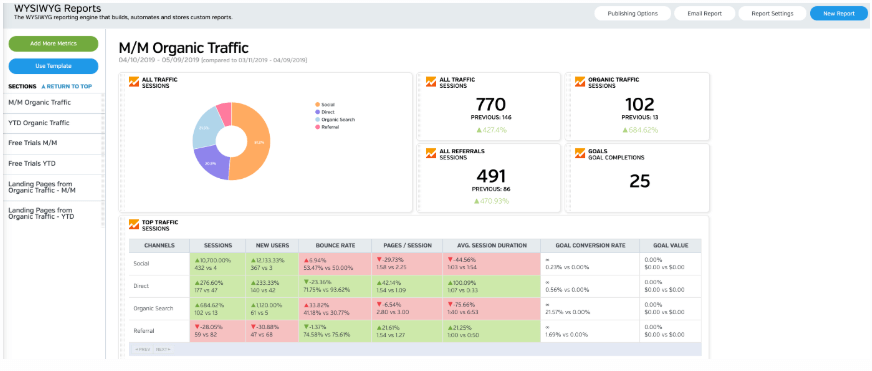
White Labeled and Branded Reports. Drag and Drop Editor. Automate your SEO, PPC, Social, Email, and Call Tracking Reporting.




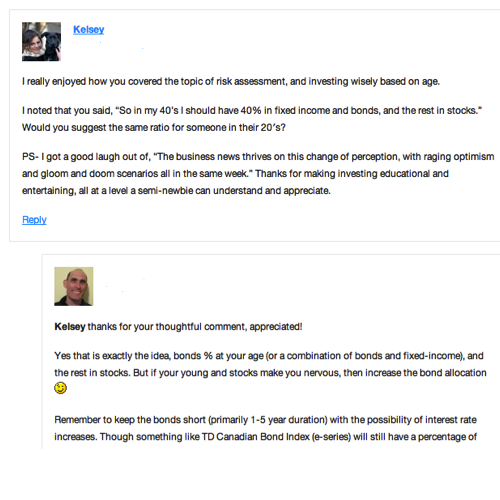
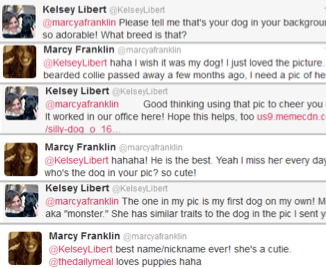
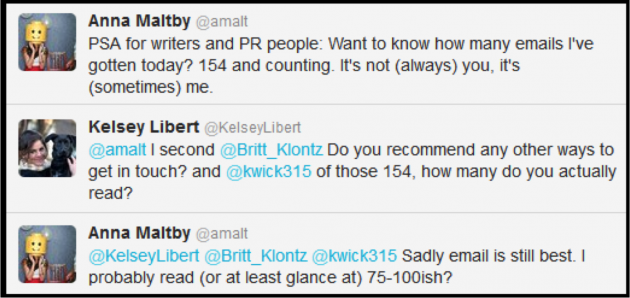

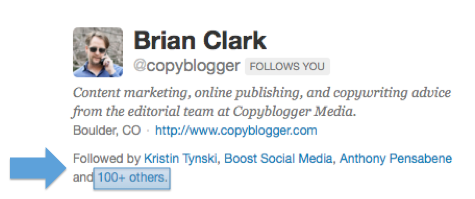
Great post and very timely for us.
The stat about exchanging information began a negotiation is awesome – never considered that before
I agree; Kelsey did a great job with this post! Glad it was helpful for you.
Hi James, I’m glad you enjoyed my post! That tidbit was my favorite tip from the keynote speech, too. I’ve seen a much higher response rate when I apply this theory to the introduction of my email. Best wishes applying this to your outreach!
Engagement does work. What we don’t agree with, in the above are points 5 & 6. Why? Social endorsements can be purchased via tools such as boostsocialmedia, Fiverr, bulkfans, etc… Developing a mutual outreach business relationship is much more than the implied social endorsements as indicators, and publishers know this fact as well. Someone who just started a FaceBook page a month or two ago with 1100 + likes and poor interaction does not carry “social” authority or influence. With that said, social media relationships are build off of the same foundations one uses to build offline relationships. Those psychological indicators include: general commonality, similarity of interests, age, writing style, content presentation, so forth. Social media is still in its infancy, and content digesters are catching up fast. Your thoughts?
Thanks for the feedback! I’m glad you agree that engagement does work.
A good rule of thumb for detecting fake followers on Twitter, is to
evaluate if the ratio of following:followers. If the number is very high and the ratio is equally matched, then it’s likely this user is using bots to gain followers. For example, 143,342 following : 143,342 followers.
Yes, developing a mutual benefit relationship is much more than social interactions. I wrote “The Blogger Outreach Equation” for SEOmoz, which expands upon this further. This post focuses more on the neuroscience behind relationship building.
Social media is one small tool we can leverage for relationship building. Since it’s still in its infancy, it’s a very powerful tool for interacting with editors. In an editor’s inbox you may be up against 150/emails a day. It’s unlikely a small editor has 150 @’s a day. If you use social media to send an initial connection (see tip #2), then you’ll increase your odds of getting a higher response rate both on Twitter and in an email.